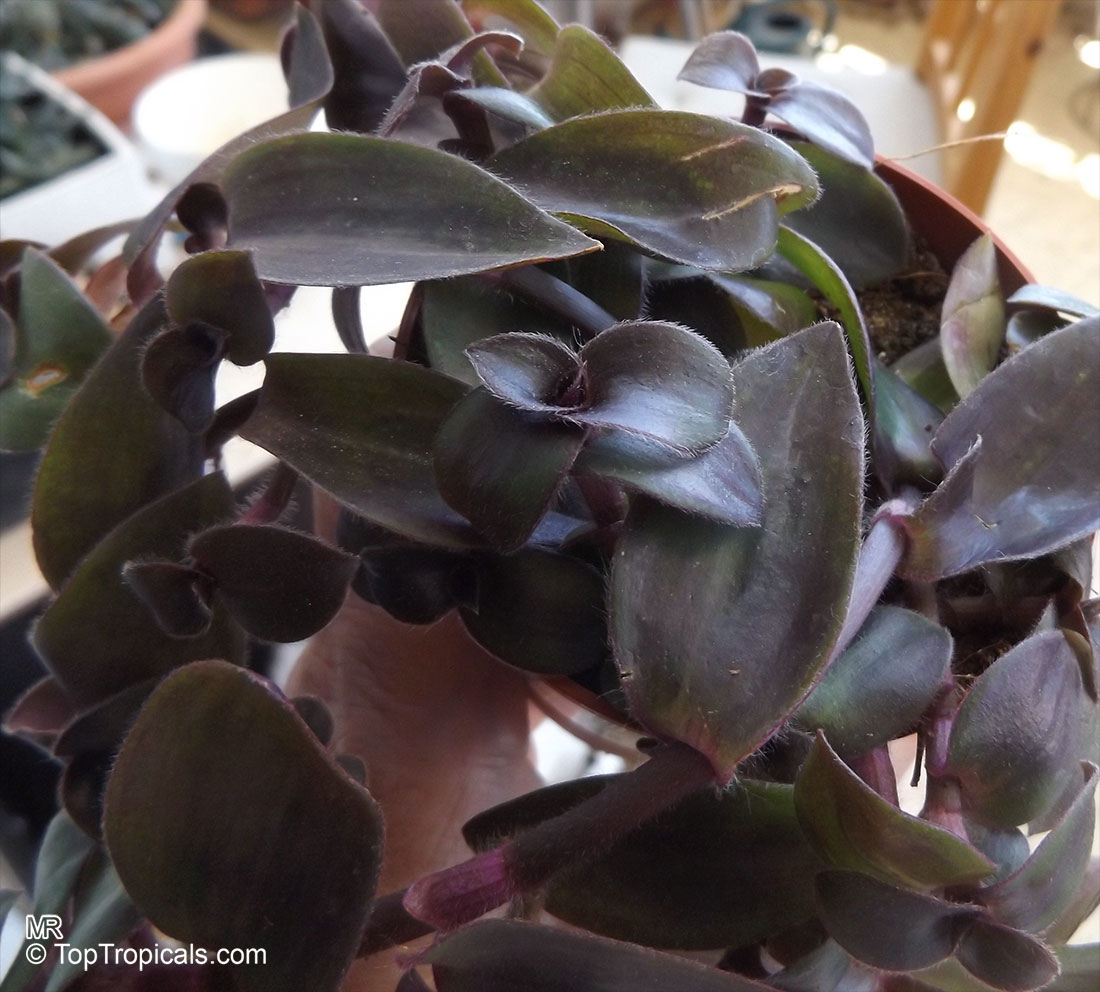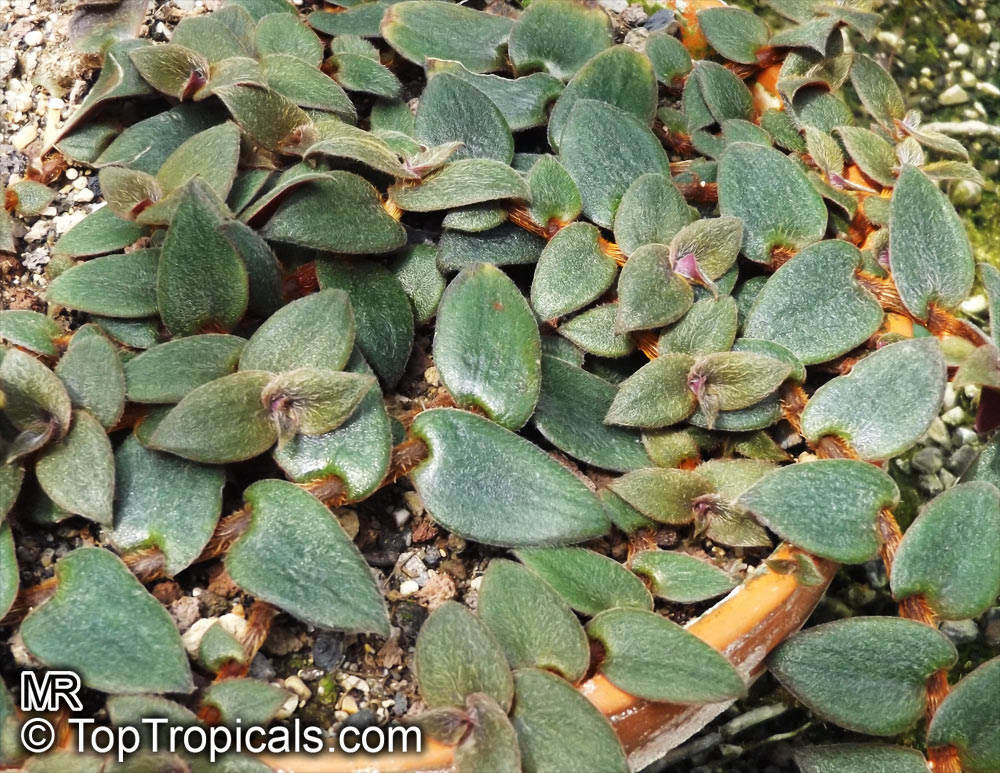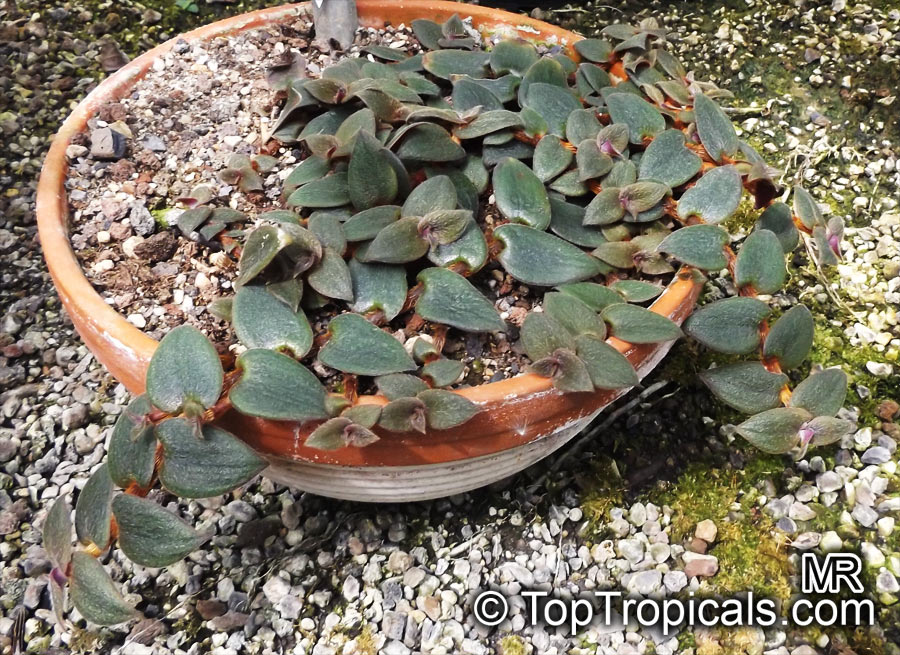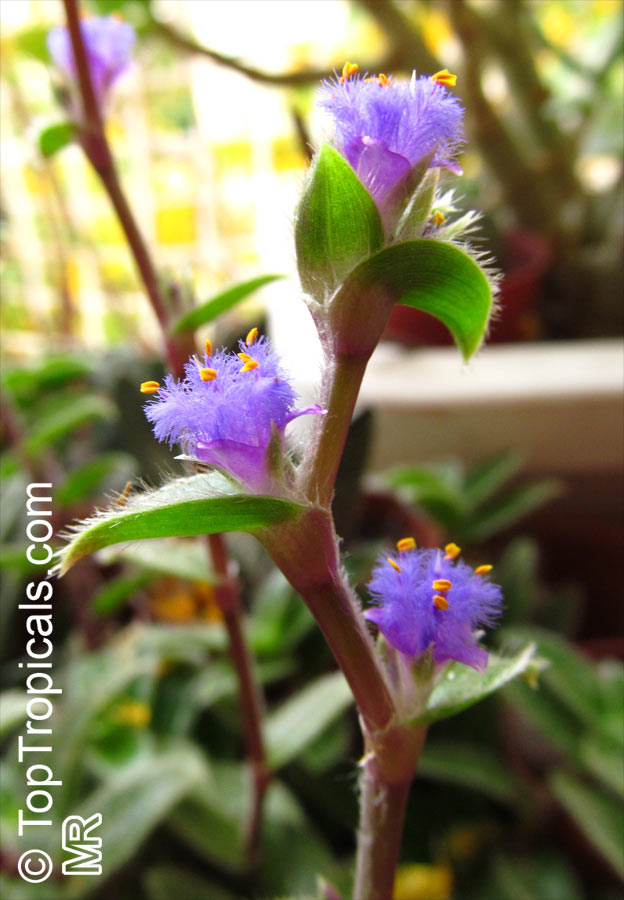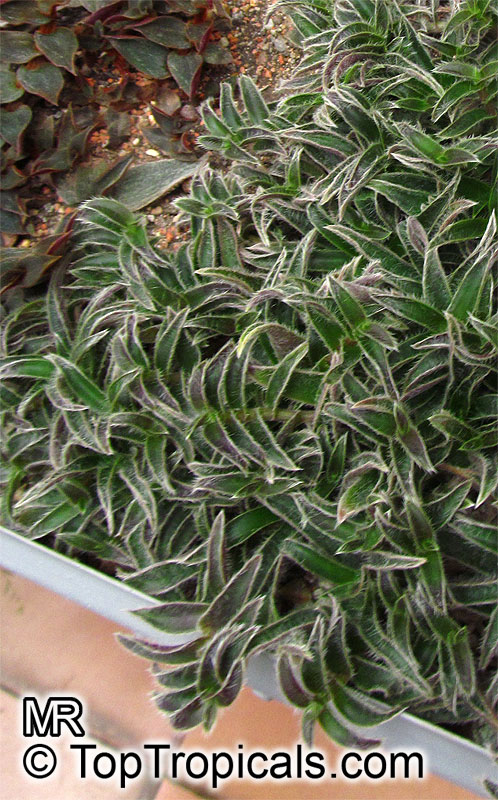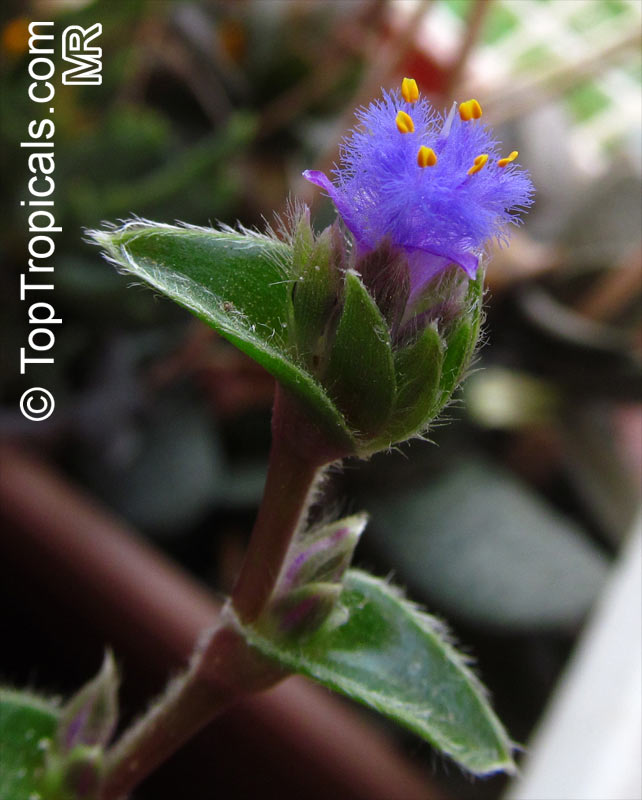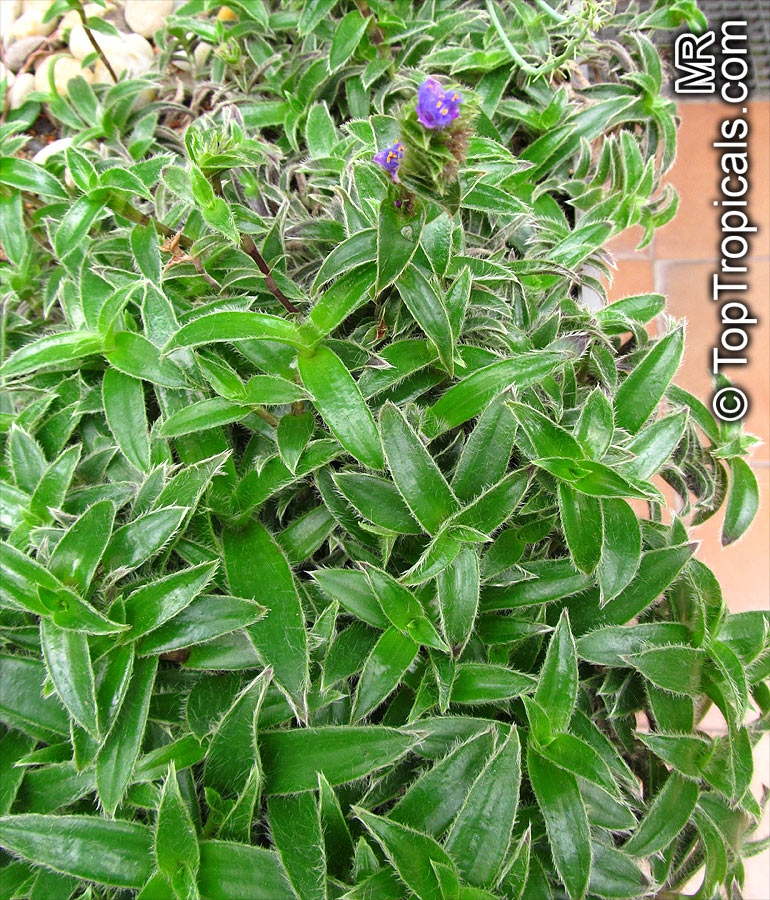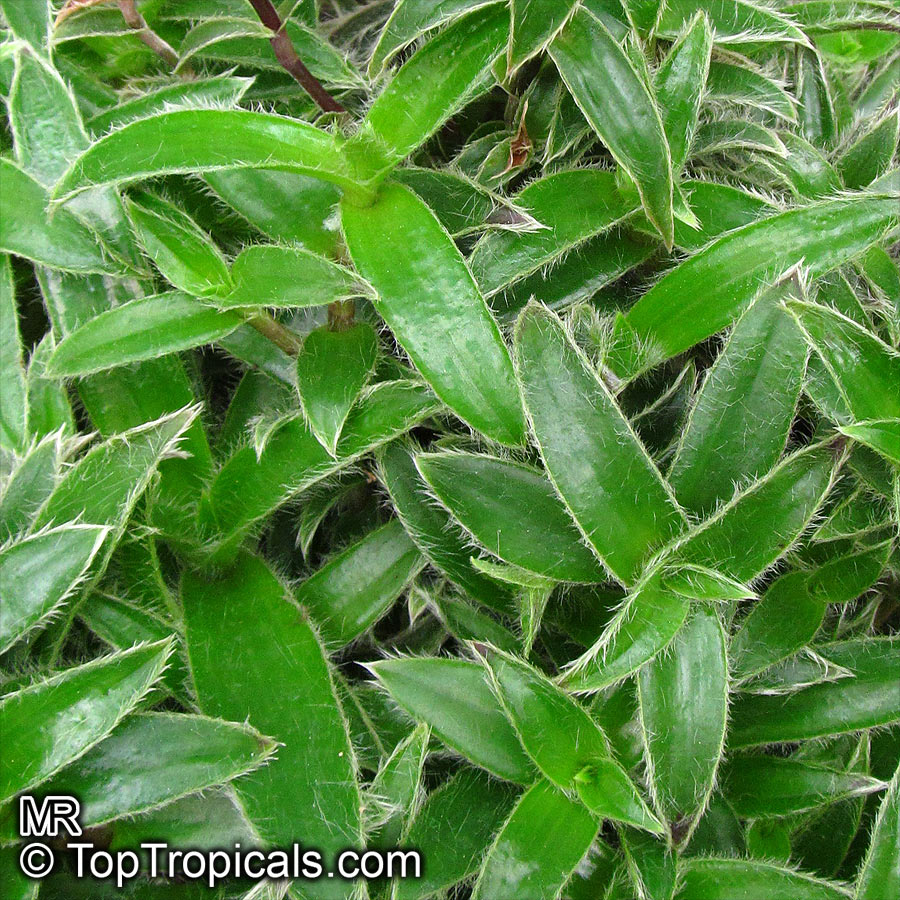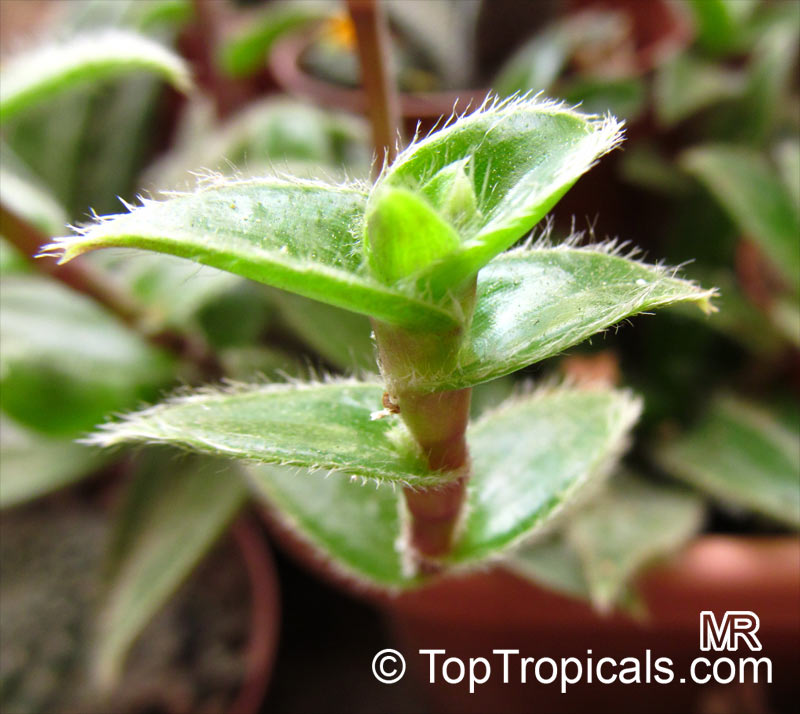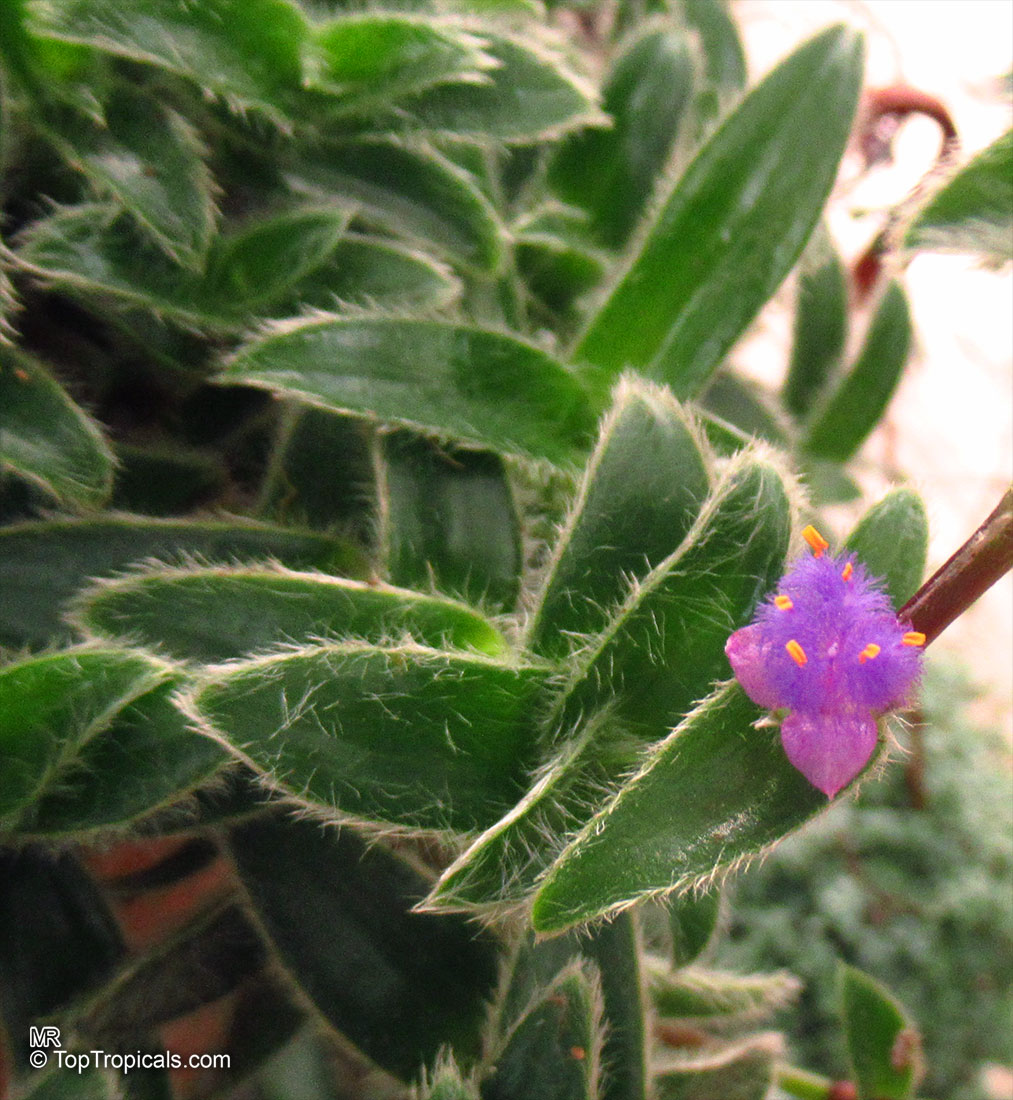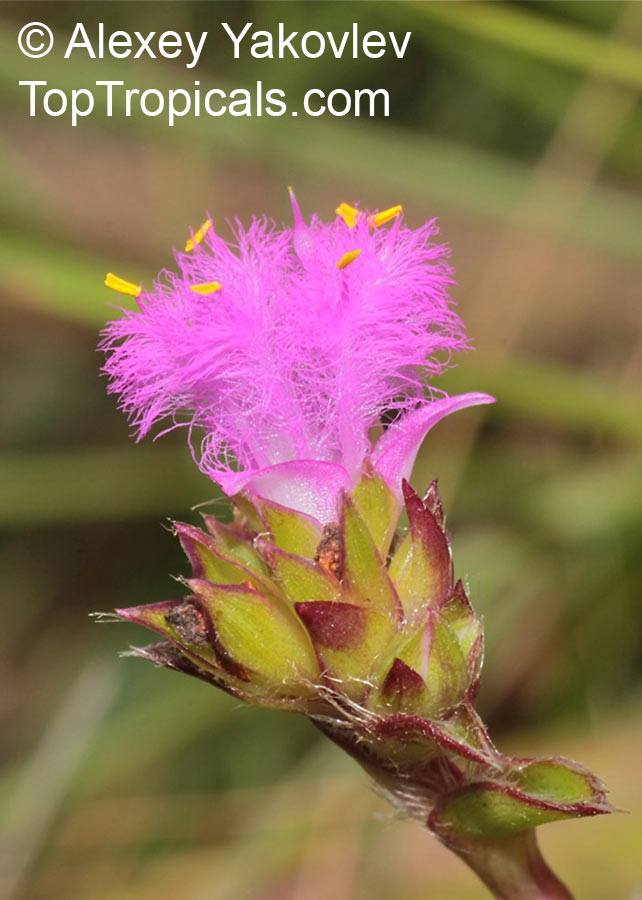Cyanotis - Search results
Top Tropicals Plant Encyclopedia
| Number of plants found: 3 |
Botanical names: Cyanotis beddomei, Cyanotis kewensis
Common name: Teddy Bear Vine
Family: Commelinaceae
Origin: Southern India






Native to South India, it's a small flower-bearing shrub that is suitable for a range of horticultural applications. With its delicate appearance, it's an excellent choice for border edges, container gardening, low-maintenance rock gardens, and hanging baskets.
Cyanotis beddomei typically grows to 2-5 feet tall and wide, making it a great privacy or garden border plant. It is a sun-loving plant, requiring several hours of direct sunlight per day to thrive. Those with conditions of partial shade to semi-shade can also do well in Cyanotis beddomei. It requires moderate water for best growth, ensuring soil is moist but not soggy.
Most conspicuous about Cyanotis beddomei is its flowers, which burst into bloom during the spring and summer. Its flowers are small and can range in color from blue to lavender to purple. The color of the flower will depend upon the variety of the plant.
Cyanotis beddomei is a popular choice amongst gardeners in USDA hardiness zones 9-11. It can survive in colder climates with a bit of extra care taken in the winter season. To prevent winter damage, a layer of mulch can be applied over the soil to insulate the roots and keep them from freezing. In areas of light frost, it is best to plant in a pot and move it indoors during the coldest months.
Overall, Cyanotis beddomei is an easy-care, low-maintenance flower that adds a delicate touch to any outdoor landscaping. With its lovely flowers, attractive foliage, and fast growth, it is sure to bring life and color to any garden!
Botanical names: Cyanotis somaliensis, Tradescantia somaliensis
Common names: Furry Kittens, Pussy Ears
Family: Commelinaceae
Origin: Eastern Africa, Rwanda, Somalia





Cyanotis somaliensis (Furry Kittens), a plant native to Eastern Africa, Rwanda, Somalia, is an evergreen perennial related to Tradescantia. It is known for its tolerance to dry conditions, bright blue or lavender-purple flowers and most notably, densely ranked, lance-shaped leaves that are almost hidden by the hairy trail of its stems. It can be grown in USDA Zone 10-11.
Cyanotis somaliensis is an easy and forgiving plant to grow requiring little effort in terms ofplant care. It is best suited for a brightly lit spot away from direct sunlight and for the pot to be in semi-shade conditions. Compost should be kept moist at all time, and the plant should be misted regularly for optimal growth. When it comes to watering, liberally from spring to autumn and sparingly in winter. When it comes to propagation, cuttings can be taken from the stems.
Cyanotis somaliensis' growth varies depending on climate, such that in warm regions, it can be a groundcover, reaching low-growing of 2ft, while in colder regions, it may take the form of a small shrub, reaching 2-5 ft. With this said, when planting in cold regions, in addition to the care previously mentioned, some extra protection may be needed, such as mulching and additional layers for the pot when temperatures drop to make sure the plant receives enough warmth.
Botanical name: Cyanotis speciosa
Common names: Doll's Powderpuff, Wandering Jew
Family: Commelinaceae
Origin: South Africa







Cyanotis speciosa, or Doll's Powderpuff, is an evergreen groundcover or small shrub native to South Africa that packs a punch of bold color and long lasting beauty. With its slender stems, it can reach heights up to two to five feet in height, depending on its environment and maturity, and will boast a vibrantly colored mauve, pink and blue flowers that will flowering through winter, spring and the summer months.
This plant is extremely easy to grow and will thrive in full sun to semi-shade areas with moderate water, making it ideal for a variety of gardens, landscapes, and containers, as well as being a great choice as a low growing and low maintenance option. As such, it is a popular choice for gardeners of all levels and locations, as it can grow in USDA Hardiness Zones 9-11.
Cyanotis speciosa is relatively low maintenance and easy to care for, but there are some guidelines to keep in mind for the best results. It does well in loose, well-draining soil and should be watered regularly. However, keep an eye on the soil's water content level and water sparingly in hotter and dryer climates, and less during winter. For those living in colder regions, the Powderpuff can be grown in pots and should be kept on the drier side, inside during the colder months.
As a perennial, it will generally bloom again each year, however, deadheading the flowers is recommended to encourage this process. For optimum growth, fertilizing should also be included and done with a controlled release fertilizer prior to blooming.
With its lovely mauve, pink and blue flowers, low maintenance care requirements and ease of growing, it is no wonder why Cyanotis speciosa is a popular choice of flower to much life to any garden or accent any home or lot.
Nothing found
